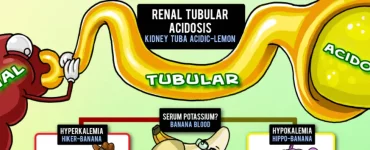There’s a Picmonic for That: Nephrotic Syndrome
Given its widespread influence on the rest of the body’s systems, understanding the pathological basis for kidney disease is immensely important to any medical student’s success. The cellular mechanisms leading to the various nephritic and nephrotic syndromes can be cumbersome and confusing. Luckily for you, there’s a Picmonic for Nephrotic Syndromes.

Nephrotic Syndrome
Picmonic Hint: Nerd-frog
Nephrotic syndrome is a group of symptoms including massive proteinuria defined as a daily loss of 3.5 gm or more of protein, hyperlipidemia, generalized edema, and hypoalbuminemia which results from renal pathology. Nephrotic syndrome is caused by several diseases including membranous glomerulonephritis, minimal change disease, and focal segmental glomerulosclerosis. Nephrotic syndrome is usually initially related to a derangement in the glomerular capillary walls that result in increased permeability to plasma proteins. Loss of protein leads to hypoalbuminemia beyond the compensatory rate of synthesis in the liver, which contributes to generalized edema due to decreased colloid osmotic pressure in the blood. Additionally, nephrotic syndromes are often characterized by immunodeficiency due to loss of immunoglobulins and thrombotic complications due to loss of anticoagulants like antithrombin, protein C, and protein S in the urine.
Glomerular Diseases
Picmonic Hint: Glow-Mare
Glomerulonephritis is the formation of anti-glomerular basement membrane antibodies results in glomerulonephritis due to damage to the kidney glomerular basement membrane. Here is a handy infographic to help you remember all the nephrotic and nephritic syndromes. Check out our other resources to learn more about Glomerular disorders.














